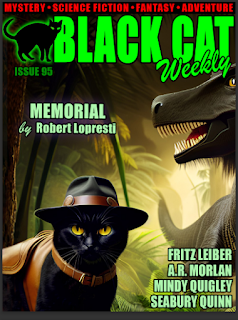 |
| Happy Independence Day! |
Summer is a great time for reruns, so today I present “Writing Dialog,” which has been published in several places and is both a short story and a lesson in writing dialog. Enjoy. — Michael
Writing Dialog
“Dialog is difficult to write,” I said.
“Why?” An attractive young writer, eager to learn the secrets of my success, sat across from me. This wasn’t the first time we’d met to discuss writing.
“Because it must be realistic without being real.”
“I don’t understand.”
“Well, um, I’m not sure I can explain it, but—let’s see—real people, like, they stop and start and, um, they st-stutter and talk in run-on sentences. Or incomplete sentences. And they don’t always think before they, um, open their mouths and stuff. You know?”
“That was bad.”
“Wasn’t it, though?” I said. “I hear people talking like that every day.”
She leaned forward. “So how do you make dialog realistic without being real?”
I considered for a moment before continuing. “Take out the fluff. Don’t start sentences with ‘well.’ Eliminate the ‘um’s and ‘er’s. Eliminate throwaway bits such as ‘by the way.’”
“That sounds easy enough, but that can’t be it. There must be more.”
I reached across the table and patted her hand. She didn’t pull away. “There’s much more, but perhaps we should order a drink before continuing. You game?”
After she said she was, I called the waiter over, ordered a pair of frozen margaritas, and watched him walk away. Then I continued. “That was a good example.”
She appeared bewildered. “Of what?”
“Of knowing when to write dialog and when not to.”
“I still don’t understand.”
“I could have written, ‘I called the waiter over. He introduced himself, “Hi, I’m Bob. I’ll be serving you today.” “Hi, Bob,” I said. “What will you have?” he asked. “Two frozen margaritas,” I told him. “Is that all?” “Yes, Bob, that’s all,” I said. Then I watched him walk away before I continued.’”
“That wouldn’t have advanced the plot at all, would it?”
I smiled. She was beginning to understand. I said, “Not at all.”
“Anything else?”
“Avoid long blocks of ‘dialog’ where a single character does all the talking. Once a character has said more than three consecutive sentences, you’re in danger of writing a monolog or a soliloquy. Even worse is when each of your characters speaks in long, uninterrupted blocks. That creates alternating monologues.”
“That was four sentences.”
“You could have interrupted me and broken it up a bit.”
“No,” she said. She licked salt off the rim of her glass. “I like listening to you.”
I liked what her tongue was doing but I couldn’t allow myself to be distracted. I had much more to teach her.
“The info dump should also be avoided,” I told her, ”especially in dialog.”
“What’s an info dump?”
“An info dump is when the author needs or wants to convey information to the reader and chooses to do it in a block of text rather than parceling it out in bits and pieces as the story progresses.” I took a sip from my margarita and realized she’d already finished half of hers. “It’s especially bad when one character tells the other character something they both already know.”
“Give me an example.”
“As you know, we’re sitting in the bar of Bonita’s, a place you once described as your favorite Mexican restaurant. Bonita’s was opened in 1910 and is still owned and operated by the same family. It started as a hole-in the-wall and has grown significantly since then. What makes Bonita’s unique is that the founding family—the Fitzpatricks—are Irish. It’s the best place in town to celebrate St. Patrick’s Day and Cinco de Mayo.”
I saw a twinkle in the young writer’s eye. Maybe it was my charm. Maybe it was just the alcohol. “I did know all that. So why did you tell it to me?”
“Info dump.”
“Will it be important later in the story?”
“I doubt it.”
She caught the waiter’s attention and ordered two more frozen margaritas. I had barely finished my first one when he arrived with the fresh margaritas.
“What else?” she asked.
“Avoid blathering.”
“What’s blathering?”
“When one character asks a question that can be answered simply, but the second character uses it as a jumping off point to ramble on and on.”
“For example?”
“What’s your name?” I asked.
“Jo,” she said. “I was named after my uncle Joe, but my parents dropped the ‘e’ to make my name feminine. My uncle Joe was a cool guy. He taught me to hunt and fish. Well, my uncle Joe and my Dad did. They took to me to Clauson’s farm every summer. The Clausons were my mother’s cousins. My mother never went out there with us. She liked to stay home. She said she enjoyed having a little time to herself. She—” The young writer stopped and looked at me. She had beautiful blue eyes. “I’m blathering, aren’t I?”
I smiled and repeated something she’d said earlier. “I like listening to you.”
This time she reached across the table for my hand and our fingers entwined. Then she wet her lips with the tip of her tongue and looked deep into my eyes.
I cleared my throat. “Of course, most of these rules can be broken if the story warrants it. Sometimes you need a character who stutters or one who blathers. But just one.”
She stroked my palm with the tip of one finger. “What else?”
“Always have a good line to exit the scene.”
Jo lowered her voice. “And what do you have?”
I already knew her answer, but I asked because it was the best way to end the scene. “Would you like to go to my place and see my manuscripts?”
































